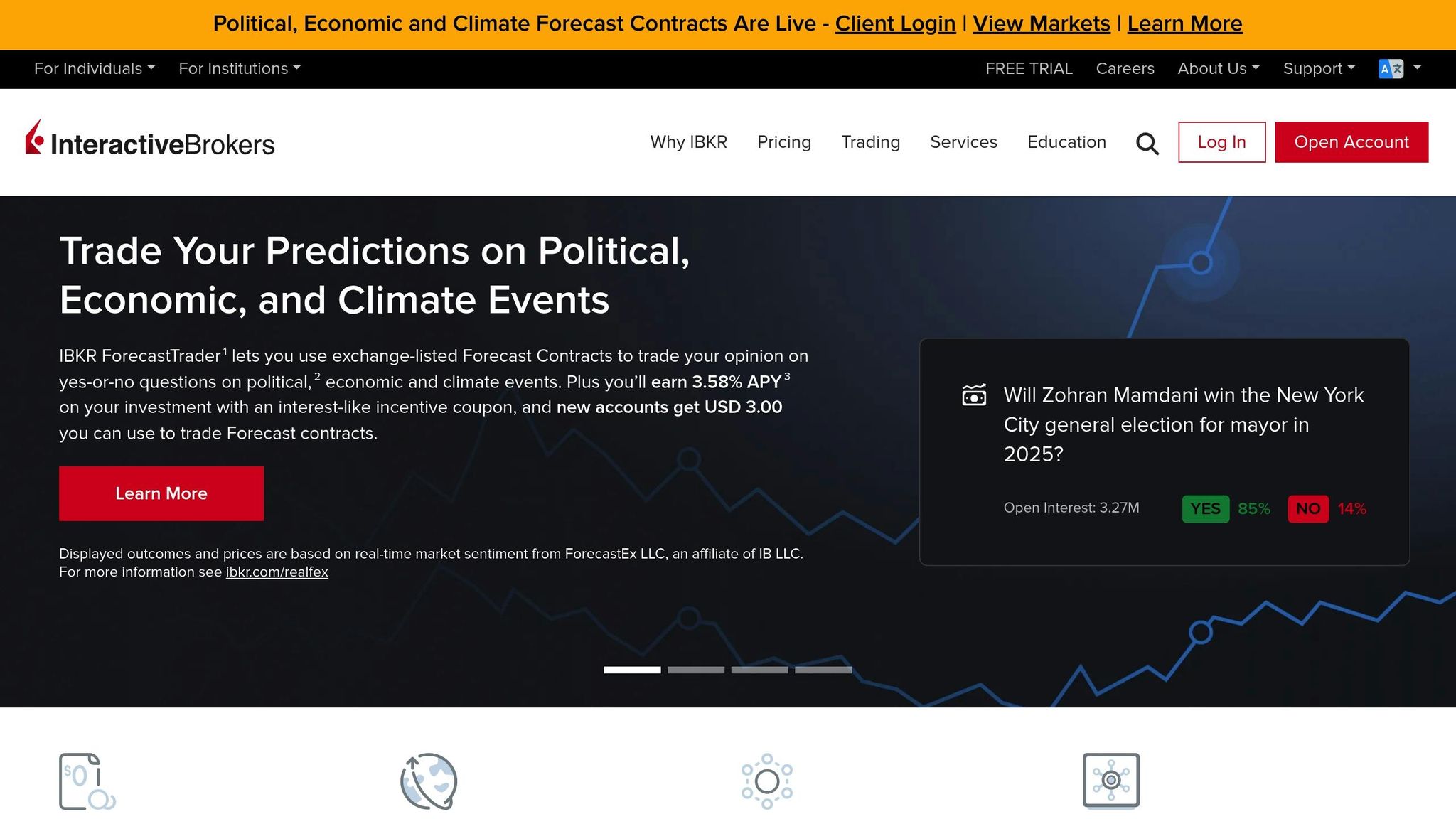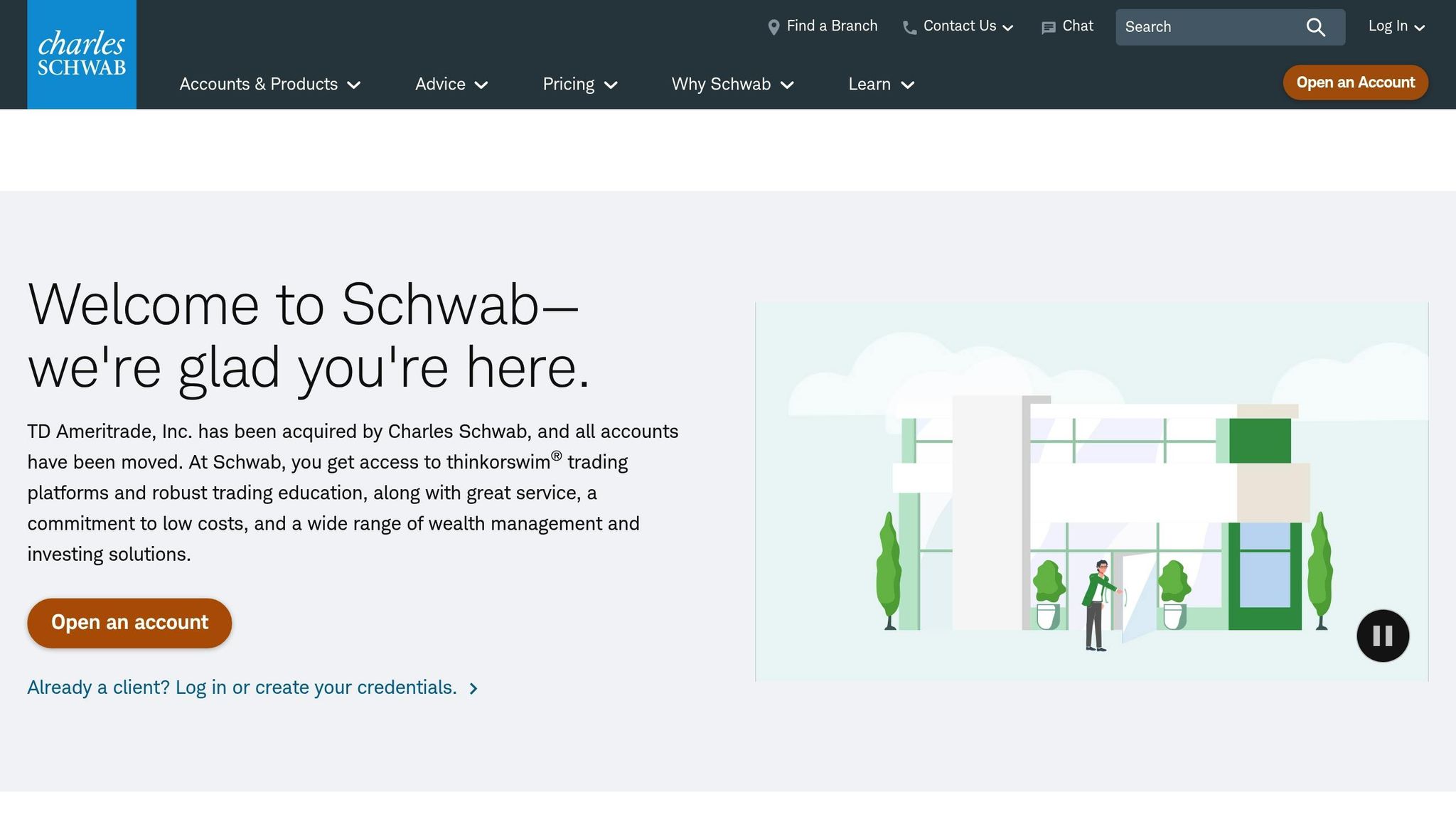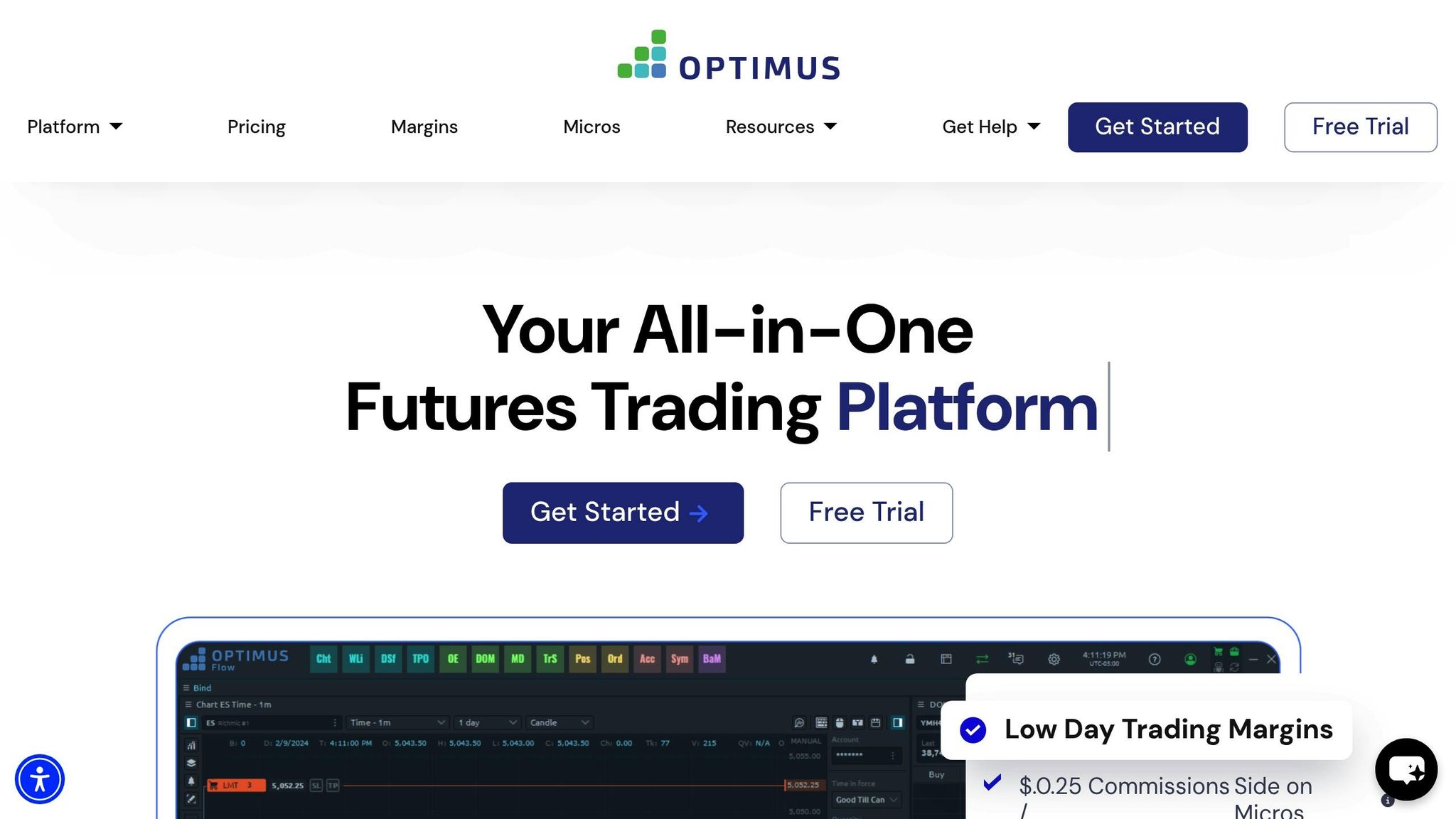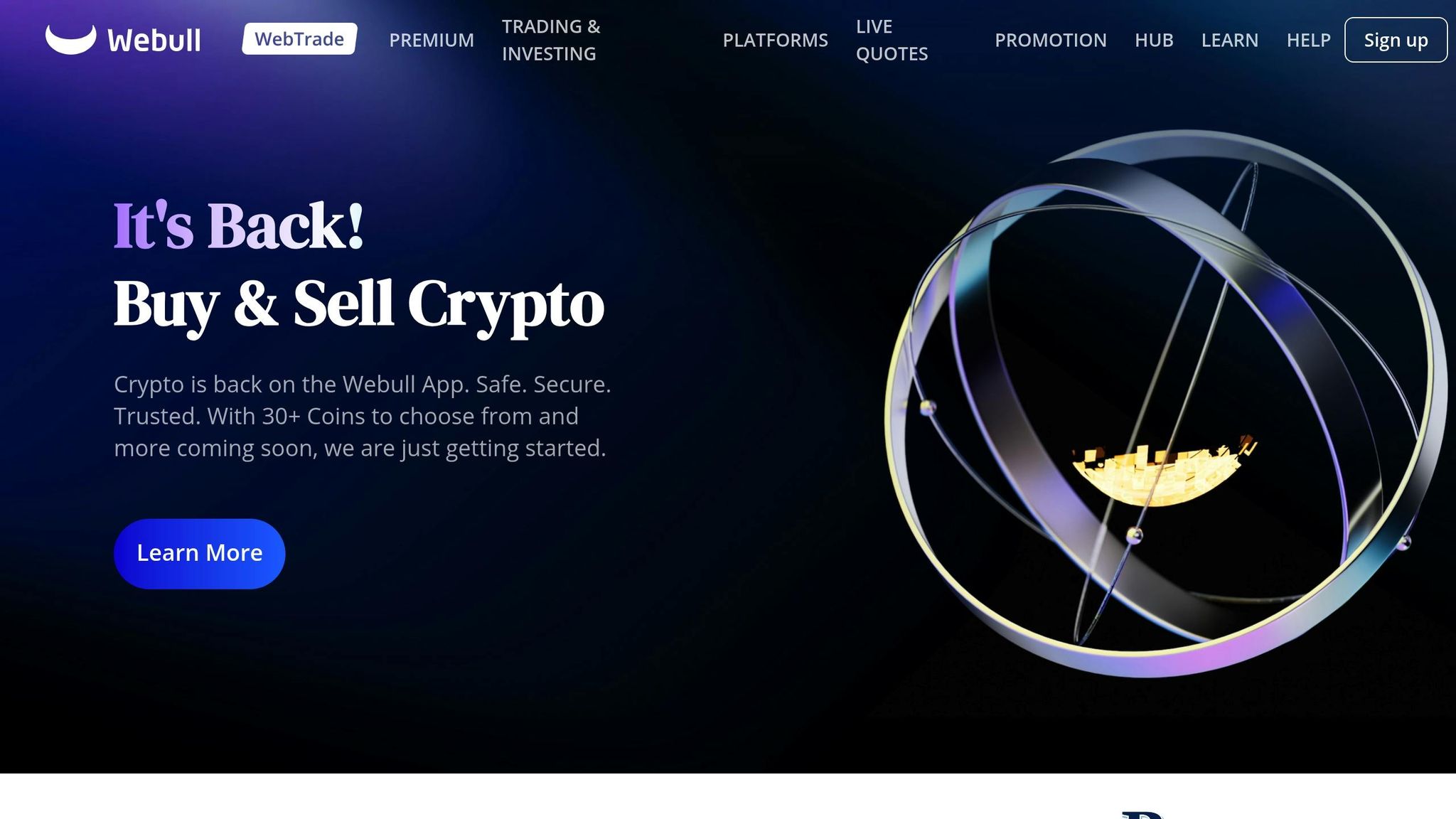If you’re an active futures trader, choosing a broker with low intraday margin rates can significantly boost your trading efficiency. Intraday margins allow you to control larger positions during the trading day with less capital, freeing up funds for other opportunities. However, brokers differ in their margin policies, trading tools, and costs. Here’s a quick look at some of the best futures brokers for low intraday margins:
- NinjaTrader: Offers reduced intraday margins on popular contracts like E-mini S&P 500, paired with advanced charting and strategy tools.
- AMP Futures: Provides some of the lowest intraday margin rates available, with no minimum account balance required.
- TradeStation: Combines competitive intraday margins with automation and backtesting tools for experienced traders.
- Interactive Brokers: Known for its portfolio margining and low rates, ideal for traders managing correlated positions.
- Plus500 Futures: Focuses on reduced intraday margins with a simple, user-friendly platform.
- TD Ameritrade (thinkorswim): Offers flexible intraday margins and advanced charting for precise risk management.
- Optimus Futures: Prioritizes cost-effective trading with clear pricing and flexible margin policies.
- Webull: Provides affordable intraday margins, especially for micro futures contracts like MES and MCL.
Key Takeaway
To maximize your trading capital, compare brokers based on intraday margin rates, platform features, trading costs, and compliance. Below is a comparison table summarizing the key highlights.
Quick Comparison
| Broker | Intraday Margin Rates | Platform Features | Ideal For |
|---|---|---|---|
| NinjaTrader | Low on E-mini, micro contracts | Advanced charting, strategy builder | Active futures traders |
| AMP Futures | Extremely low rates | Multiple platform options, real-time tools | Cost-conscious traders |
| TradeStation | Competitive rates | Automation, backtesting | Experienced traders |
| Interactive Brokers | Low with portfolio margining | Professional-grade tools, mobile app | Professional traders |
| Plus500 Futures | Reduced for liquid contracts | Simple interface, mobile access | Beginners and day traders |
| TD Ameritrade | Flexible rates | Advanced charting, risk tools | Intermediate traders |
| Optimus Futures | Low rates, small accounts | Customizable platforms, real-time data | Budget-friendly traders |
| Webull | Low for micro contracts | Affordable, mobile-friendly | Entry-level traders |
Choose the broker that best fits your trading style, capital, and platform needs to make the most of low intraday margins.
Understanding Margins For Futures Trading
1. NinjaTrader
NinjaTrader stands out with its advanced charting tools and attractive intraday margin rates, making it a popular choice for active day traders. By partnering with clearing firms, the platform offers a variety of margin structures tailored to meet the needs of frequent traders. Let’s dive into the key features of its margin policies and platform capabilities.
Intraday Margin Rates
One of NinjaTrader’s advantages is its lower intraday margin requirements for positions that are closed within the same trading day. For popular futures like the E-mini S&P 500 or micro contracts, intraday margins are significantly reduced compared to overnight positions. However, keep in mind that any positions held overnight must meet the full margin requirements, as the preferential rates only apply to day trades.
Platform Features
The platform provides a suite of tools designed to enhance trading efficiency and risk management. With real-time margin monitoring integrated into the account dashboard, traders can easily track their margin usage and available buying power. Tools like automated position sizing, bracket orders, stop-loss settings, and profit targets help streamline order management.
NinjaTrader also includes a Market Analyzer for real-time scanning of multiple futures contracts, helping traders spot opportunities as they arise. For those interested in automated trading, the Strategy Builder allows users to backtest strategies under realistic market conditions, adding an extra layer of preparation before executing trades.
Trading Costs
NinjaTrader offers competitive trading costs, with commission rates that vary depending on the brokerage partner. The platform maintains transparent pricing for both commissions and exchange-related fees, ensuring traders know exactly what they’re paying. High-volume traders may even benefit from waived licensing fees, reducing the cost of accessing real-time data and advanced tools.
Regulatory Compliance
NinjaTrader works with brokerage partners that adhere to federal futures trading regulations, ensuring customer funds are protected. The platform also supports compliance by offering robust tax reporting tools. Margin calculations and updates align with current exchange standards, providing traders with accurate, up-to-date information about their trading obligations.
2. AMP Futures

AMP Futures stands out for its competitive intraday margin rates, catering to active day traders by offering greater leverage and lower capital requirements. Their transparent margin policies make them a popular choice for traders looking for efficiency and flexibility.
Intraday Margin Rates
AMP Futures provides some of the most competitive intraday margin rates available. These rates automatically reset at the end of each trading session. For qualified accounts, portfolio margining offers even lower requirements when trading correlated contracts. This feature is particularly beneficial for traders using spread strategies or managing multiple contracts within the same asset class.
Platform Features
To complement its margin policies, AMP Futures equips traders with advanced platform options like CQG and Sterling Trader Pro. These platforms are designed with features that make trading more efficient, including real-time margin calculations that update continuously. This eliminates the need for manual calculations, helping traders stay on top of their buying power. Integrated tools, such as automatic position limits and bracket orders for setting profit targets and stop losses, give traders greater control. Additionally, real-time profit and loss tracking – covering both realized and unrealized gains – ensures traders can make quick, informed decisions during active sessions.
Trading Costs
AMP Futures maintains a straightforward commission structure that varies based on the type of contract and trading volume. High-volume traders may even negotiate lower rates. Unlike many brokers, AMP Futures does not charge extra fees for platform access or market data from major exchanges. Exchange and regulatory fees are clearly outlined in trade confirmations, ensuring full transparency. Another bonus? There’s no minimum account balance required, making AMP Futures accessible to traders with varying levels of capital.
Regulatory Compliance
As a registered Futures Commission Merchant (FCM) and member of the National Futures Association (NFA), AMP Futures adheres to strict industry regulations. Customer funds are held in segregated accounts in compliance with CFTC rules. The broker provides detailed monthly statements and real-time trade reporting, ensuring traders meet regulatory requirements for tax purposes. A dedicated compliance team actively monitors trading activity to ensure adherence to position limits and other rules. New accounts include comprehensive risk disclosures to help traders understand the potential risks of futures trading and leveraged positions. Regular account reviews further support traders in managing their positions responsibly.
3. TradeStation
TradeStation is a go-to platform for active futures traders, offering competitive intraday margins and a suite of advanced tools. With features like robust charting, automation options, and clear pricing, it caters to traders who value flexibility and cost-conscious trading.
Intraday Margin Rates
TradeStation provides competitive intraday margin requirements, which reset at the close of each session to maximize your buying power. For qualified accounts, portfolio margining is available, helping reduce margin requirements when trading correlated instruments or spread strategies. Smaller accounts can also benefit from access to lower-margin contracts.
Platform Features
TradeStation’s platform is packed with tools designed to enhance trading efficiency:
- Advanced Charting: Includes built-in indicators and drawing tools for in-depth analysis.
- EasyLanguage: A proprietary programming language for creating custom strategies and automating trades.
- RadarScreen: Lets traders monitor multiple futures contracts in real-time, complete with scanning capabilities.
- OptionStation Pro: Extends functionality to futures options trading, offering specialized analytics and risk management tools.
- Backtesting: Integrated tools to test strategies using historical data.
- Mobile App: Full access to trading and account management on the go.
These features make it easier to manage trades, analyze data, and execute strategies seamlessly.
Trading Costs
TradeStation keeps trading costs transparent and competitive. Per-contract commissions are paired with volume-based discounts, and traders can access real-time market data for major futures exchanges. For those testing strategies, the platform offers commission-free paper trading. Exchange fees and regulatory charges are clearly detailed on trade confirmations, ensuring no hidden surprises.
Regulatory Compliance
As a registered Futures Commission Merchant and member of the NFA, TradeStation adheres to strict CFTC regulations. Customer funds are segregated, and the platform employs features like audit trails, real-time monitoring, and automated risk management tools (e.g., position limits) to maintain compliance. Additionally, TradeStation offers educational resources to help traders navigate regulatory standards and improve risk management practices effectively.
4. Interactive Brokers

Interactive Brokers is a global futures broker known for its competitive intraday margin rates and advanced tools tailored for both professional and active retail traders. Let’s break down how its margin policies and platform features translate into practical advantages for traders.
Intraday Margin Rates
Interactive Brokers offers low intraday margin requirements, often undercutting standard overnight margins. Through its portfolio margining system, the platform evaluates overall portfolio risk. This can lead to reduced margin requirements for traders holding offsetting or correlated positions, making it a cost-efficient option for managing capital.
Platform Features
The Trader Workstation (TWS) is packed with advanced tools for order management and risk control. Some standout features include:
- Real-time profit and loss tracking
- Advanced charting tools
- Algorithmic trading capabilities through its programming interface
Interactive Brokers’ risk management system actively monitors positions and margin requirements, sending timely alerts to help traders stay ahead of potential risks. The platform supports a variety of advanced order types, such as bracket orders, trailing stops, and conditional orders, providing flexibility for executing complex strategies.
For traders on the move, the mobile app delivers full trading functionality. It allows you to monitor positions, place orders, and manage risk seamlessly, with access to streaming quotes, charts, and account details.
Trading Costs
Interactive Brokers operates with a tiered commission structure, offering volume discounts. Its pricing is transparent, with clearly itemized exchange and regulatory fees. Traders also have the option to bundle commissions and market data, simplifying cost management.
Regulatory Compliance
As a registered Futures Commission Merchant (FCM) and a member of the National Futures Association, Interactive Brokers meets strict regulatory standards. Customer funds are kept in segregated accounts for added security. The platform also includes features like comprehensive audit trails and detailed reporting tools, which can assist traders with tax preparation and regulatory recordkeeping. Automated position limits and continuous margin monitoring further ensure compliance with regulatory capital requirements, giving traders peace of mind while they focus on their strategies.
5. Plus500 Futures
Plus500 Futures, the futures trading arm of the Plus500 Group, caters to active intraday traders by offering competitive margin structures and direct access to major futures markets. Designed for traders looking to manage lower capital requirements, the platform delivers a range of features tailored to enhance the intraday trading experience.
Intraday Margin Rates
One of the standout aspects of Plus500 Futures is its reduced intraday margin requirements compared to overnight rates. For widely traded contracts like the E-mini S&P 500 and crude oil futures, intraday margins are considerably lower, making it easier for traders to enter and exit positions during the day. The platform also adjusts these requirements dynamically, responding to market conditions and further lowering margins during periods of high liquidity.
Platform Features
The Plus500 Futures trading platform is built with simplicity and functionality in mind. It offers real-time position monitoring with automatic margin updates, ensuring traders stay informed as market conditions change. Advanced order types – such as stop-loss, take-profit, and trailing stops – are seamlessly integrated into a single-screen interface for streamlined trading.
For risk management, the platform includes tools like automatic position sizing calculators, which help traders determine the optimal number of contracts based on their margin and risk preferences. Additionally, real-time profit and loss tracking, complete with visual indicators, provides instant feedback on market movements.
To top it off, the platform is accessible via mobile apps, allowing traders to manage their positions and risks from virtually anywhere.
Trading Costs
Plus500 Futures prides itself on transparency when it comes to trading costs. The commission structure is straightforward, with competitive rates for active traders. Exchange fees and regulatory charges are clearly outlined on trade confirmations, ensuring there are no hidden surprises. High-volume traders can benefit from volume discounts, and qualified intraday positions enjoy commission-free overnight holds, adding even more value.
Regulatory Compliance
Compliance and security are key priorities for Plus500 Futures. The platform operates as a registered Futures Commission Merchant (FCM) under the Commodity Futures Trading Commission and is a member of the National Futures Association. Customer funds are securely held in segregated accounts at major U.S. banks, providing an extra layer of protection.
Plus500 Futures employs automated compliance monitoring to track position limits and margin requirements in real time, helping traders avoid over-leveraging and ensuring adherence to regulatory standards. To simplify tax preparation, the platform generates daily and monthly trading reports that summarize realized gains, losses, and commission expenses in an easy-to-read format. This comprehensive approach ensures traders can focus on their strategies while staying compliant and informed.
6. TD Ameritrade (thinkorswim)

TD Ameritrade’s thinkorswim platform stands out as a robust tool for futures trading, offering advanced charting capabilities and precise risk management features that make intraday trading smoother and more efficient.
Intraday Margin Rates
With thinkorswim, traders benefit from reduced intraday margin requirements compared to overnight margins. This means you can trade actively with a lower capital commitment during the day. The platform’s margin system also adapts to market conditions, giving you the flexibility to respond effectively to dynamic trading environments.
Platform Features
The thinkorswim platform is designed for fast and efficient trading. It supports direct chart-based order placement, advanced order types, and automated trade execution. Traders can track real-time profit and loss, while portfolio-level analysis tools help manage risk and exposure with greater precision.
Trading Costs
TD Ameritrade offers a clear and straightforward fee structure. Commissions are competitive, and volume-based discounts are available. All exchange and regulatory fees are transparently detailed on trade confirmations, so there are no surprises.
Regulatory Compliance
As a regulated entity under the CFTC and a member of the NFA, TD Ameritrade ensures customer funds are kept in segregated accounts for added security. The platform also includes automated compliance monitoring and provides the necessary tax reporting documents. Security features like two-factor authentication, fraud monitoring, and SIPC coverage protect customer assets, giving traders peace of mind. This comprehensive setup makes thinkorswim a strong contender when evaluating brokers with cost-effective and feature-packed offerings.
7. Optimus Futures

Optimus Futures is a discount broker that prioritizes cost-effective intraday trading. By offering competitive rates and flexible margin policies, the firm aims to help traders maximize their capital efficiency. Let’s take a closer look at their margin rates, platform features, pricing, and compliance measures.
Intraday Margin Rates
Optimus Futures provides lower intraday margin requirements compared to overnight margins. This setup is tailored for active traders, allowing them to make better use of their funds during trading hours. The margin structure is flexible enough to accommodate different trading styles, making it accessible even for traders with smaller accounts while maintaining a focus on risk management.
Platform Features
The broker grants access to advanced trading platforms designed for professional use. These platforms offer direct market access and quick trade execution, along with a variety of order types and customization options. Traders can tailor their interface to suit their strategies, while tools like real-time market data and depth-of-market information enable them to adapt to shifting market conditions.
Trading Costs
Optimus Futures emphasizes transparency in its pricing. The broker provides clear breakdowns of fees, including commissions, exchange charges, and regulatory costs. For traders with high activity levels, volume discounts are available, creating an environment where costs are kept manageable.
Regulatory Compliance
The firm adheres to established regulatory standards to ensure the safety of customer assets. Oversight by relevant authorities ensures accountability, and the broker employs strict protocols to protect client funds. Customers also receive detailed account statements and tax documents to assist with accurate financial tracking and reporting.
8. Webull

Webull makes its mark on the list of brokers by offering margin policies that cater to cost-conscious traders. With its low intraday margin rates, Webull provides an appealing option for active day traders looking to maximize their capital during trading hours.
Intraday Margin Rates
From 9:00 AM to 4:15 PM EST, Webull offers reduced intraday margins on select futures contracts, making it easier for traders to take advantage of market opportunities. Here’s a quick look at some of the available rates:
| Contract | Day Margin |
|---|---|
| Micro E-mini S&P 500 Futures (MES) | $115.06 |
| E-mini S&P 500 Futures (ES) | $1,150.49 |
| Micro WTI Crude Oil (MCL) | $172.43 |
| Crude Oil (CL) | $1,717.65 |
| Micro Gold (MGC) | $280.50 |
| Gold (GC) | $2,244.00 |
Keep in mind that positions held beyond 4:15 PM EST must meet full exchange Initial Margin Requirements. Additionally, margin rates may rise during periods of high market volatility.
Regulatory Compliance
Webull prioritizes risk management with clear safeguards in place. The platform enforces automatic liquidation at a 4% Equity-to-Margin ratio and issues margin alerts at 20%, 15%, and 10% thresholds. These measures are designed to manage risk effectively and protect traders’ investments.
Broker Comparison: Advantages and Disadvantages
Active futures traders often need platforms that combine advanced features with user-friendly functionality. Here’s a breakdown of the key strengths and challenges of three popular brokers to help you decide which one suits your trading style.
NinjaTrader is well-known for its customizable platform tailored specifically for futures trading. Features like direct chart trading and support for add-ons make it a favorite among dedicated traders. However, the platform’s extensive customization options can be overwhelming for beginners.
TradeStation stands out with its advanced charting tools, efficient order entry, and powerful automation features. It also offers robust backtesting capabilities, which appeal to experienced traders. That said, the platform’s complexity can make it harder for newcomers to get started.
Interactive Brokers provides some of the most competitive margin rates in the industry, paired with a feature-rich platform called Trader Workstation (TWS). While it’s packed with professional-grade tools, the interface can feel daunting for those just entering the futures trading world.
Below is a quick comparison to summarize each broker’s strengths, weaknesses, and ideal user group:
| Broker | Key Advantage | Drawback | Ideal For |
|---|---|---|---|
| NinjaTrader | Highly customizable with cloud-based access | Steep learning curve for beginners | Dedicated futures traders |
| TradeStation | Advanced tools, automation, and backtesting | Complex interface with a learning curve | Experienced traders |
| Interactive Brokers | Competitive margin rates and extensive tools | Intimidating for new traders | Professional traders |
When choosing a broker, consider your trading style, how much capital efficiency you need, and how comfortable you are with navigating complex platforms. This ties back to the article’s emphasis on the benefits of low intraday margins for futures traders.
Final Recommendations
After reviewing the broker profiles above, here’s a summary to help you choose the right futures broker based on your goals, experience level, and available capital. Each recommendation highlights the most suitable option for different trader profiles.
If low intraday margin rates are your priority, Interactive Brokers offers some of the most competitive rates available. This makes it a great choice for traders aiming to maximize capital efficiency. Their Trader Workstation platform provides institutional-grade tools, though it does come with a learning curve. For those who value cost-effective trading and are willing to invest time mastering the platform, this is a solid option.
For dedicated futures traders, NinjaTrader is the go-to platform. Its robust customization options, direct chart trading features, and extensive add-on ecosystem make it perfect for executing complex strategies. If specialized tools and flexibility are what you need, this platform delivers.
Experienced traders focused on automation and backtesting will find TradeStation to be an excellent fit. With advanced tools for developing algorithmic strategies and in-depth analytics, TradeStation caters to those who need a comprehensive suite for sophisticated trading.
If you’re new to futures trading, it’s wise to start with a platform that offers educational resources and a user-friendly interface. Once you’ve built your confidence, you can transition to more advanced tools.
Your choice of broker should also align with your available trading capital. While low intraday margins are appealing for active traders, don’t overlook the importance of platform reliability and execution quality. Poor trade execution can quickly offset any savings from lower margins.
Finally, regulatory trust is a critical factor in futures trading. All the brokers mentioned maintain strong regulatory standings, but Interactive Brokers stands out for its global reach and institutional-grade focus, offering extra peace of mind for those managing larger accounts.
For high-volume intraday traders, platforms with fast execution and advanced order types are essential. While mastering these platforms takes effort, striking the right balance between low margins, reliability, and execution quality can significantly enhance your trading strategy.
FAQs
What are the advantages of using a futures broker with low intraday margin requirements?
Choosing a futures broker with low intraday margin requirements offers several advantages for active traders. With lower margins, you can manage larger positions while using less capital, which provides access to greater leverage and the chance to amplify returns. This is particularly beneficial for those employing short-term or high-frequency trading strategies.
Another perk is the ability to keep more of your funds available. Reduced capital requirements mean you can use your money more flexibly – whether that’s diversifying your trades or pursuing other investment opportunities. For traders aiming to keep costs low while maximizing their potential, low intraday margin rates can be an essential part of achieving their financial objectives.
What’s the difference between intraday and overnight margin requirements in futures trading?
Intraday margin requirements are generally lower and apply solely during the trading session. This allows traders to use higher leverage with less upfront capital, making it a popular choice for those who actively open and close positions within the same day.
In contrast, overnight margin requirements are higher and apply to positions that remain open after the trading session ends. These elevated margins account for the added risks and potential market swings that can occur outside regular trading hours.
Grasping these distinctions is key to managing your capital wisely and ensuring your trading approach aligns with your financial objectives.
What should I look for in a futures broker for active day trading?
When picking a futures broker for active day trading, it’s crucial to prioritize low intraday margin requirements. These allow you to leverage your trades more effectively while keeping the upfront capital lower. Equally important is assessing the broker’s trading platform and execution speed – a reliable, fast platform can make all the difference in executing trades on time in a high-speed trading environment.
Don’t overlook fees and commissions, either. With frequent trading, these costs can pile up quickly, so finding a broker with competitive rates is essential. Make sure the broker is regulated by a trustworthy authority to ensure a secure and compliant trading experience. Lastly, review their market access – you’ll want to confirm they provide the instruments and markets that align with your trading strategy.








